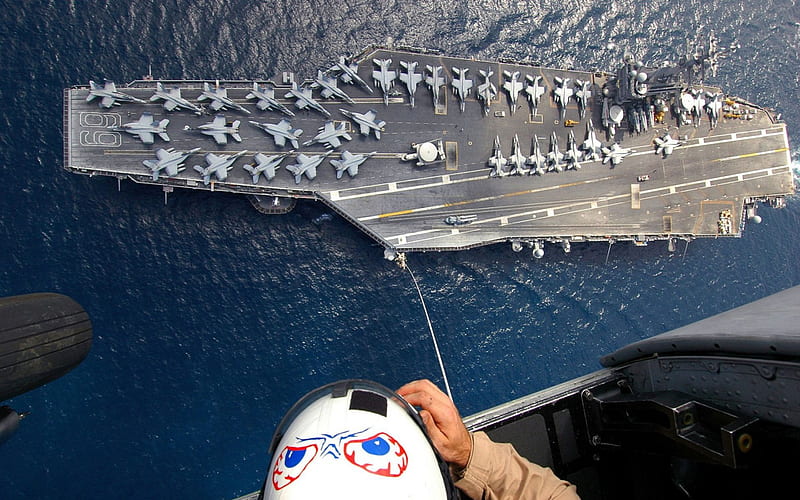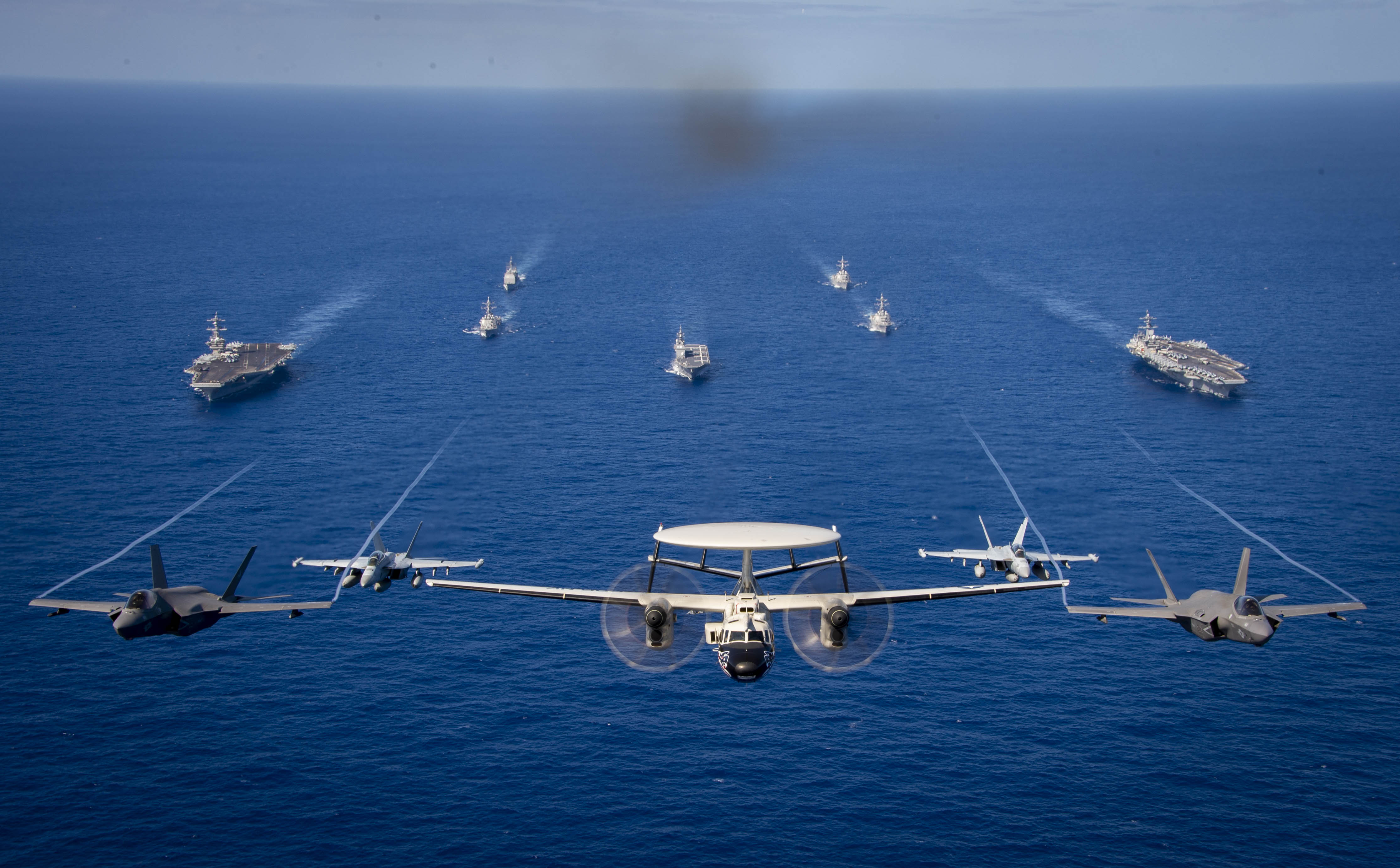Amid burgeoning tensions in the Indo-Pacific region, military analysts anticipate that the United States could send nearly half of its aircraft carriers into the western Pacific this year to counter China’s and North Korea’s belligerence.
There are currently three US aircraft carriers in the western Pacific Ocean, and two more are scheduled to arrive. The US Naval Institute’s Fleet and Marine Tracker said on February 5, the USS Abraham Lincoln, a component of the US Navy’s Pacific Fleet, was seen leaving its home port in San Diego, California, and traveling towards the western Pacific.
When the USS Ronald Reagan relocates from Yokosuka, Japan, to the Puget Sound naval shipyard in Washington for maintenance, another carrier, the USS George Washington, is anticipated to be deployed in the region as a replacement. After their arrival, five of the eleven American carriers will have operated in the region for the first time.
Besides the USS Ronald Reagan, the USS Carl Vinson and USS Theodore Roosevelt were deployed to Guam and Hawaii on February 12 and are expected to remain in the western Pacific until April and July, respectively.
The likely deployment of five carriers in the region has been seen as an attempt by the United States to project power in the region. When three carriers were deployed earlier this year, experts noted that the US was looking to strengthen its strategic positioning in the western Pacific.

In January, the USS Carl Vinson held naval exercises in the East China Sea alongside South Korea and Japan in response to North Korea’s testing of an intermediate-range ballistic missile. The trilateral exercises included air combat simulations, advanced maritime communication operations training, combined sailing, staff exchanges, and integration.
Later that same month, the USS Theodore Roosevelt, the Japanese helicopter destroyer JS Ise, and the USS Carl Vinson participated in a training exercise in the Philippine Sea. In this concerted show of naval might, nine more vessels from the Japan Maritime Self-Defense Force joined the drills.
At the time, Rear Admiral Christopher Alexander, commander of USS Theodore Roosevelt’s Carrier Strike Group Nine, said, “We are more capable when we work together to address shared maritime security challenges.”
🇺🇲USS Carl Vinson (CVN-70)
🇺🇲USS Theodore Roosevelt (CVN-71)
🇯🇵JMSDF helicopter destroy JS Ise (DDH-182)Drills began in the Philippine Sea on Monday & will conclude on Thursday
FFF000 168112 pic.twitter.com/ERbU33IzWP— Oceanner (@Oceanworldfree) February 1, 2024
Previously, in 2020, the US Navy deployed its three aircraft carriers, namely the USS Theodore Roosevelt, USS Nimitz, and USS Ronald Reagan, to the Pacific Ocean, sparking a strong reaction from China’s state media, which asserted that Beijing would stand firm in safeguarding its interests in the region.
However, the deployment of five aircraft carriers to the region would beat that previous record.
US Expanding Presence In The Region
The recent deployment of three carriers in the region came amid rising tensions and incidents of confrontation over territorial disputes between US treaty allies, the Philippines and China.
Rear Adm. Carlos Sardiello, commander of the Carl Vinson strike group, affirmed the readiness of the carrier strike group to execute a comprehensive range of operations.
The tensions have further been escalating since the Philippines announced that it intends to increase its military personnel number on strategically significant islands it controls close to Taiwan. Infuriated at the decision, China has cautioned the country against “playing with fire.”
Additionally, another US adversary, North Korea, has also been testing the limits of its rivals, South Korea and Japan. The South Korean military reported on February 13 that North Korea launched several cruise missiles into waters off its northeastern coast, marking the country’s fifth test of these weapons.
This is North Korea’s fifth cruise missile test in less than a month.https://t.co/forxNXMvHZ
— WARCHICK (@ResaLKirkland) February 14, 2024
Following North Korean leader Kim Jong Un’s record-breaking weapons exhibitions and bellicose threats of nuclear war with South Korea and the US, tensions in the Korean Peninsula are at an all-time high.
The US military’s commitment to the Indo-Pacific area is further demonstrated by the deployment of carriers, which was planned for months despite regional concerns. The US is expected to deploy five of its eleven carriers to the Western Pacific despite being fighting with the Yemen-based Houthi militias in the Red Sea.
The diversion of its resources to the western Pacific also underscores the strategic importance of this region amid China’s expansion and intimidation in the Indo-Pacific. Additionally, Chinese carriers regularly traverse channels near Japan to enter the Western Pacific.
The Chinese aircraft carrier Shandong sailed within around 400 miles of Guam during a nearly three-week-long cruise in the Western Pacific. Guam is the most strategic US territory in the region alongside Hawaii and is expected to play a fundamental role in deterring China.
Recently #China’s aircraft carrier Shandong ran exercises in the West Pacific sailing close to Guam, the carrier hosted multiple sorties in the region, east of Taiwan, here's a basic plot showing its route along with a previous PLA carrier exercise undertaken in Dec 2022 pic.twitter.com/4AQ4O6WsRY
— Damien Symon (@detresfa_) April 24, 2023
There is a growing concern in the United States and its allies about the potential invasion of Taiwan. China considers Taiwan, an island with democratic governance, its territory. Beijing has not ruled out using force in the future as it continues to demonstrate its will to unite with the self-governing island.
Lai Ching-te, a member of Taiwan’s ruling Democratic Progressive Party and known for his skepticism toward China, emerged victorious in the presidential election held in mid-January. Beijing now views him as a potential danger to the stability of the area as a result of his victory.

There are concerns that China’s anti-ship ballistic missiles put the US aircraft carriers at risk, senior US Navy official Rear Adm. Carlos Sardiello, commander of the USS Carl Vinson strike group, said, “Our highly trained sailors can operate these complex, contested domains and be lethal and survivable and execute the mission regardless of what the threat is.”
Sardiello announced, “I am absolutely confident that the carrier strike group can execute the mission that it was designed to do effectively and safely,” even in the face of Chinese missiles. He went on to say that the strike group “demonstrates the nation’s military might.
- Contact the author at sakshi.tiwari9555 (at) gmail.com
- Follow EurAsian Times on Google News




